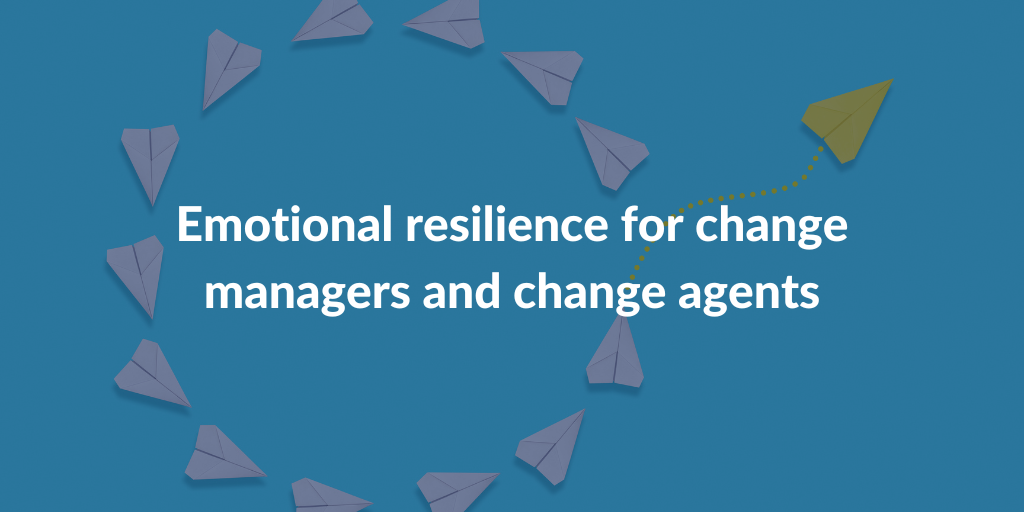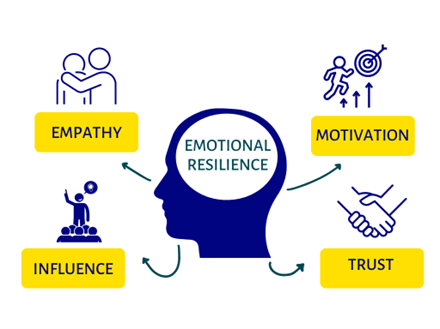What is emotional resilience? Why is it so important in agile environments, especially for change managers and change agents?
What is emotional resilience?
The first thing to define is the concept of resilience:
Resilience is defined on Treccani as the ability to react in the face of trauma and difficulties.
Emotional resilience is a fundamental skill that underpins all communication by the change agent and the change manager.
Emotional resilience means the ability to recover quickly from difficulties and to be able to return to the state of nature when faced with difficulties.
Why is this emotional intelligence so important in a company? Because it enables one to work with others in a highly effective manner, resulting in individual, team and organisational success. Today it is said that emotional competencies are twice as important as pure intellect and experience to be successful.
Why is emotional resilience important, especially for change agents and change managers?
Who are change agents and change managers and why do they need to be able to manage situations through emotional resilience?
The change agent is the person who facilitates, coordinates and manages change management initiatives. He is not in charge of the strategy but encourages its adoption. His know-how helps both managers and employees. He/she may be a manager, department head, team leader or even a resource of the organisation without formal authority, such as individual employees with a certain seniority, long experience or strong interpersonal influence.
The change manager, on the other hand, is the person who actively deals with change in the company: his task is to plan, accompany, monitor and optimise transformation processes on an ongoing basis. He advises executives and top management on organisational change and development.
He has an overview of the entire change process, is able to assess even complex situations and understands how to reach people in the company, from managerial roles to employees. He designs communication in the change process so that important information is communicated at the right time and in the best way. He is also able to withstand strong pressures and emotionally charged situations.
Change management can be entrusted to an internal or external consultant and often also to managers.
In today’s VUCA (volatile, uncertain, complex and ambiguous) corporate world, companies of all sizes can be found: large, medium and small; it is in this environment that change must be embraced in order to best overcome challenges.
In today’s business world, things are changing faster and faster, more and more new companies are appearing, and in order to remain relevant in this environment, companies need to be able to adapt to change. The ability to recover quickly from difficulties (resilience) lies precisely in this concept: change and being able to adapt in the face of new challenges!
When thinking about change, the tendency will be to see it as something negative because of the fear of the impact with the new. It will therefore take courage to make the advantage of change known. This is because the reaction and responses to change will be emotional.
Change threatens established patterns of behaviour with which we are comfortable. What unites all those who successfully cope with change is emotional resilience. In the corporate context, leadership plays an important role in fostering organisational resilience, and this task can be performed by the leader on the one hand or by the change agent on the other.
In these situations, the role of the change manager or change agent will be to react positively and be prepared for the change in which one is involved. Look for the opportunities that the change will bring, the potential benefits and improvements that can be achieved. The change manager must be a leader with good emotional intelligence who can quickly recover from adverse situations, easily returning to his or her ‘normal’ self. The demonstration of his resilience is an example for those around him to influence the management of adverse situations.
The change agent, on the other hand, will be the one dedicated to guiding the company and its team to overcome difficulties in order to grow.
Methods to simplify our thinking
There are various ways to solve a business change. Checklists are drawn up to eliminate the barrier of uncertainty, so that everything is ready. Then one asks the question: ‘Have we done everything we should have done? Is there anything else we need to do? Repetition helps to fortify certain ideas. Checklists help with this kind of repetition. Lists can also be written differently, recognising each step that needs to be taken. Using mind-maps can be a further help. Planning helps people to cope better with a change, to incorporate it into their daily routine: it is easier to remember to do a new task if it is part of an existing one, but how?
- By tracing current working patterns
- By finding a transition point, an activity that comes before the new one. Finding a transition point, an activity that comes before the new one and can act as an anchor point
- By linking the periodicity (frequency) of the starting task with your new task, then trying to find the frequency at the end point.
How to train resilience to change?
The questions a change management practitioner must ask are: how can we guide people through change? Can we reduce the resilience required?
Another way to develop resilience is to prepare oneself to become a true change agent. This is a broad field of knowledge and there are many ways and methods to work with change. The fundamental skill must be to influence colleagues in a positive way to persuade them to participate in such change. This can only happen if there is a basis of empathy in the group where such change is taking place. Ordering people to work differently will not achieve the objectives, because even if colleagues comply with your requests, they will not have accepted the approach and will try to return to their old ways of working at the first good opportunity.
Therefore, points of view must be understood and plans must be shared with everyone involved.
Mélanie Franklin, in her webinar Resilience Powers Change, suggests an empathic approach through: motivation, trust, empathy and influence.









